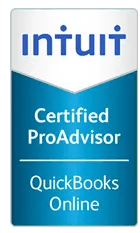10 Things to Do When Starting a Business
Many of you have been there, or may be right now – thinking about starting a business, toying around with the idea, but not really sure where to start. You’re at that point where you feel ready to take the plunge, but you don’t want to miss anything, and the fear of the unknown might have you dragging your feet a bit.

1. Create a business plan
2. Make sure you are in compliance with law and have all legal matters in order
3. Hire an accountant and attorney
4. Think about and plan around funding
5. Keep business and personal funds separate
6. Decide on an office space or work location
7. Keep good records - have a "paper trail"
8. Market yourself - create and identity for your business
9. Plan for taxes - set money aside to cover
10. Start-up costs - understand WHAT they are and WHEN you can deduct them
1. Create a business plan.
It might seem unnecessary, but take the time to WRITE out your business plan. You need to be able to face your idea head-on and determine exactly what your business does and what its identity is. It is also a critical element to identifying your competition and determining what makes YOUR approach unique. It will be difficult to nail those items down when you’re operating on an idea that is just floating around in your mind, with no concrete plan in place. Also, it might make you come to terms with some shortfalls that you need to address before taking that next step.
2. Make sure you are in compliance with the law and have all legal matters in order.
This includes determining the business structure/form of ownership, filing for a fictitious name (a “doing-business-as” or “DBA”), obtaining the necessary permits/licenses, registering for state/local taxes as necessary (for example, sales tax, employment tax, etc.), registering for a Taxpayer Identification Number (TIN) if needed, obtaining insurance, and filing any other necessary paperwork.
3. Hire an accountant and attorney.
Running a business and focusing on what YOU do best will take enough of your time and energy. Retain professionals to assist you with taking care of the administrative side of things, and to help keep you in compliance with all of your filings/requirements, so that you can put 100% of your focus into your growing business!
4. Think about and plan around funding.
How are you going to fund the costs associated with getting your business off the ground? This is definitely an area that takes a lot of thought and pre-planning. The best approach is to start a business with your own savings, because you don’t want to get stuck owing money that you cannot pay back. If you must borrow, do it from a bank. If possible, DON’T borrow from family and friends….it’s not worth the problems that could result if things go awry and you cannot pay the loan back.
5. Keep business and personal funds separate.
This might seem like a no-brainer, but it deserves mentioning – take the time to segregate your business and personal funds. Set up a separate business bank account/checkbook. It’s not a good practice to commingle business and personal money, and this will make your life (and your accountant’s) SO much easier if
you take the time to get this right. It will also give you a better sense of where your business is from a cash-flow standpoint.

6. Decide on an office space/location.
Are you going with the home office approach? If so, will you have clients coming into your office? Or, will you rent an outside space for your venture, and is the extra cost worthwhile? There are numbers factors to weigh on when making this decision. Think ahead and make a list – how does one approach vs. the other affect your marketability, level of service, level of commitment, client/income base, etc.?
7. Keep good records – have a “paper trail.”
As you start the business and move into operation mode, make sure to keep copies of everything – if not hard copy (which is ideal), on an electronic storage drive. This includes all financial records – bank statements, receipts, deposit slips, invoices, etc. MAKE SURE to frequently backup your computer data files as well!
8. Market yourself – create an identity for your business.
Get your company’s name/service out there from the get-go, and don’t let up! Potential customers need to be consistently reminded of who you are and what you can do. Branding can also be a big part of becoming a successful business. Give your business a visual identity as well as a professional one by designing a logo or standardizing your letterhead/business cards. Also, dress and act professionally when meeting with clients – represent your company well!
9. Plan for taxes – set money aside to cover.
If you retain an accountant as we suggested in #3 above, he/she can help you plan for this. Make sure to consider tax implications (right from the start!) and try to plan for what you’ll owe at year-end based on what you’re budgeting for the business. Set money aside for it or, even better, make estimated tax payments throughout the year so you aren’t stuck in a bad situation at tax time, owing a large sum at once. Don’t blow through all of your profits without giving thought to the tax situation, because taxes will always be there no matter what!!
10. Start-up costs – understand WHAT they are and WHEN you can deduct them.
This also ties in with planning for your tax situation. For start-up expenses that you incur in order to get the business operating, you can deduct up to $5,000 in your first year of business – the business must be in operation to deduct them! For example, if you incur starting expenses in one year but don’t have any client base/revenue until the next year (your business essentially
didn’t start its operation until that next year), you would wait and deduct the (up to $5,000) start-up costs in the latter year, once operational. Anything above $5,000 would need to be deducted over time (amortized). As far was what you can deduct, be aware that, in general, these costs include those related to the process of creating or acquiring an active trade or business, or getting a business ready to operate. And just remember – these expenses are ONLY deductible if the end result is the formation of a successful business venture!
If you need further guidance on starting your business, AdminBooks is offering a valuable and affordable
Business Startup Program!
You will receive:
*One (1 60-minute) Business Coaching session with our expert to answer your questions and provide you an insight on your new entreprenurial endeavors.
*11 e
xclusive AdminBooks articles to guide you
*Book recommendations from EntreLeadership and AdminBooks
*Preview chapters of a series of books written by business strategist, Mike Michaelowicz


















